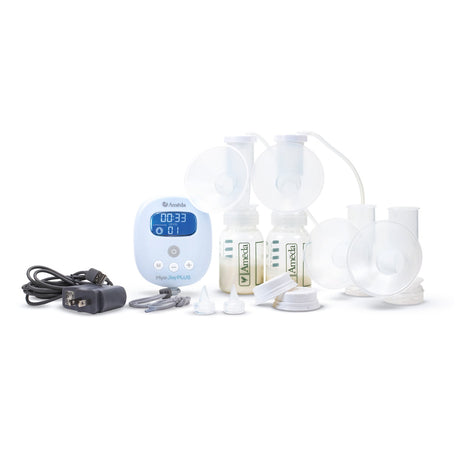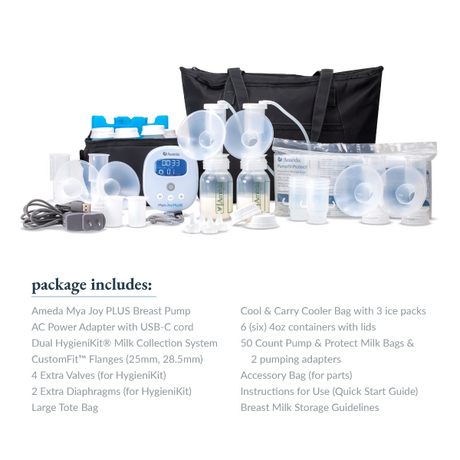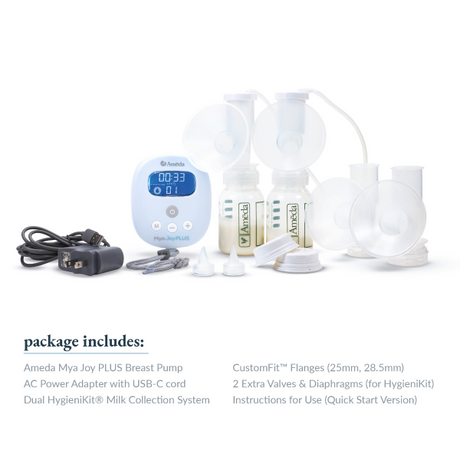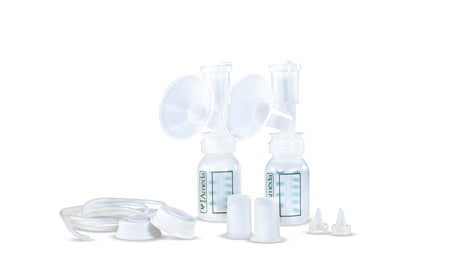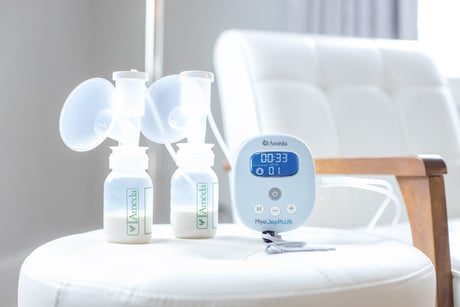Published:
Advice For Moms of Late Preterm to Full-Term Infants* Who Are Exclusively Pumping
Pamela K. Murphy, PhD, MS, APRN, FACHE
Exclusively using a breast pump to provide breast milk for your late preterm baby (34-36 full weeks) or your full-term (37+ weeks) infant can seem like a daunting task at times. Here are some simple tips to make it easier.
-
Pick the Right Breast Pump - start with a reputable Hospital Grade rental pump or a new Personal Pump. If you are primarily using a breast pump to produce breast milk for your baby, it is important to have a reliable pump that’s easy to use and effective.
- Hospital Grade Rental pump – the preferred option for exclusive pumpers, made to be used by more than one mom. The motors are strong, long-lasting, and can be used by multiple moms for multiple children. These pumps are often used to stimulate, build, and maintain milk production to help ensure an adequate milk supply. They’re used to frequently drain the breasts of milk as instructed by your lactation consultant or health care provider. Ameda’s Platinum and Pearl® are examples of reliable Hospital Grade Pumps. Product Locator
- New Personal Electric Pump – a great option for moms with established milk supplies who are pumping daily. Made to be used by one mom for one baby, it is not recommended to use a used/second-hand personal pump as a worn motor can affect the way the pump performs. Personal pumps are often covered by insurance at no charge. Ameda Mya Joy and Mya Joy PLUS are examples of Personal Use Pumps.
-
Fit Your Flange – Flange size is important for comfortable pumping. A comfortable flange leads to easier pumping and better milk flow. (Breast Pumping Guide)
- Too small - your flange should not constrict nipple movement – this can lead to pain, nipple damage, and reduced milk flow.
- Too big - your areola should not be pulled into the flange tunnel – this can cause discomfort and reduce stimulation and milk flow.
- Just right – your nipple should move freely within the flange tunnel – this leads to comfortable pumping and proper stimulation, leading to good milk flow and stimulation helping you produce an adequate milk supply.
-
Schedule Time – allow flexibility for yourself. Missing a session is okay from time to time; however, frequently missing pumping sessions can affect your milk supply since your body starts to think you are weaning.
- Try to aim for 6-8x/day with an average span of time between pumping sessions+. Pump about every 3 hours, giving yourself a longer rest at night to catch some sleep, about 4-5 hours.
- If you are also breastfeeding your late preterm infant, use your pump afterward until breasts are drained of milk – work with your lactation consultant on the right schedule that fits you and your baby’s needs.
- Consider using a tracking app – many of them are free and include options to set reminders and record session information. Ameda Baby App
- Remember the longer you go between pumping sessions, the more your body thinks it is time to wean or start making less milk. It is a balance:
- More pumping = more milk
- Less pumping = less milk
-
Take Care of Yourself - You need time to rest, eat, hydrate, and enjoy time with family and friends.
- Make sure you are taking care of your needs. Staying hydrated, eating a balanced diet, and getting some sleep are all important to help you keep up with the demands of exclusive pumping.
- Ask for help! There are many ways family members can help support your pumping routine. If possible, get your support crew involved by helping you clean pump parts, label and store milk, and by spending time with baby/other children as you rest.
- Spend time with friends. Take a walk, meet for a chat and relax. Consider joining a new mom and/or breastfeeding group in your area; it is a great way to get support and meet new people.
Exclusive pumping is a labor of love. A reliable, good-quality pump, the right flange fit, the proper schedule, and self-care can all help you produce the most milk for your baby and give you the freedom to spend time with your growing family. *Late Preterm infant = 34-36 full weeks of pregnancy; Full term infant = 37 – 42 weeks of pregnancy


